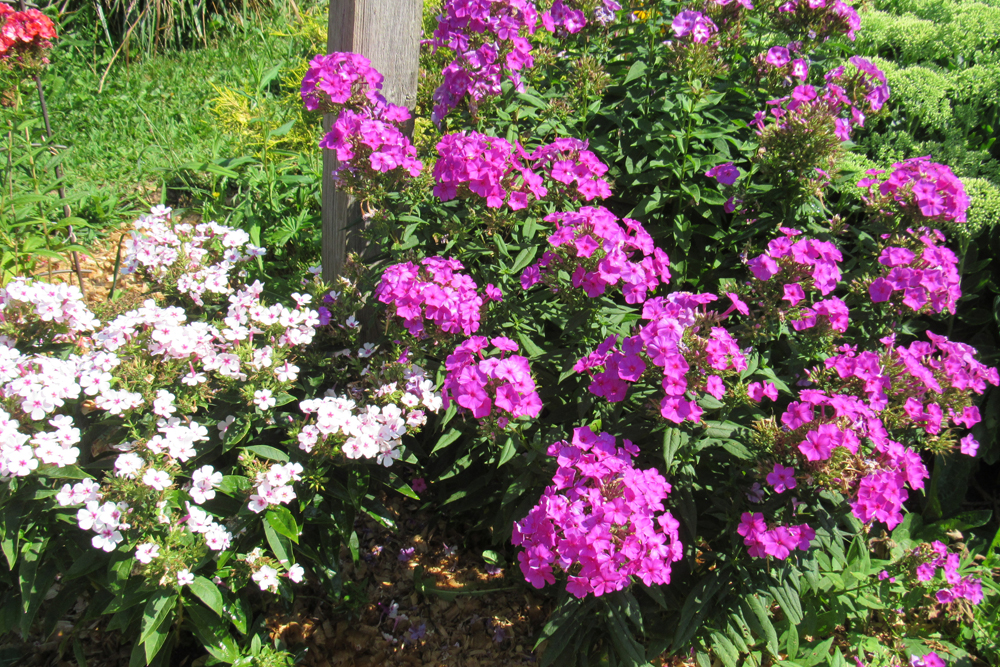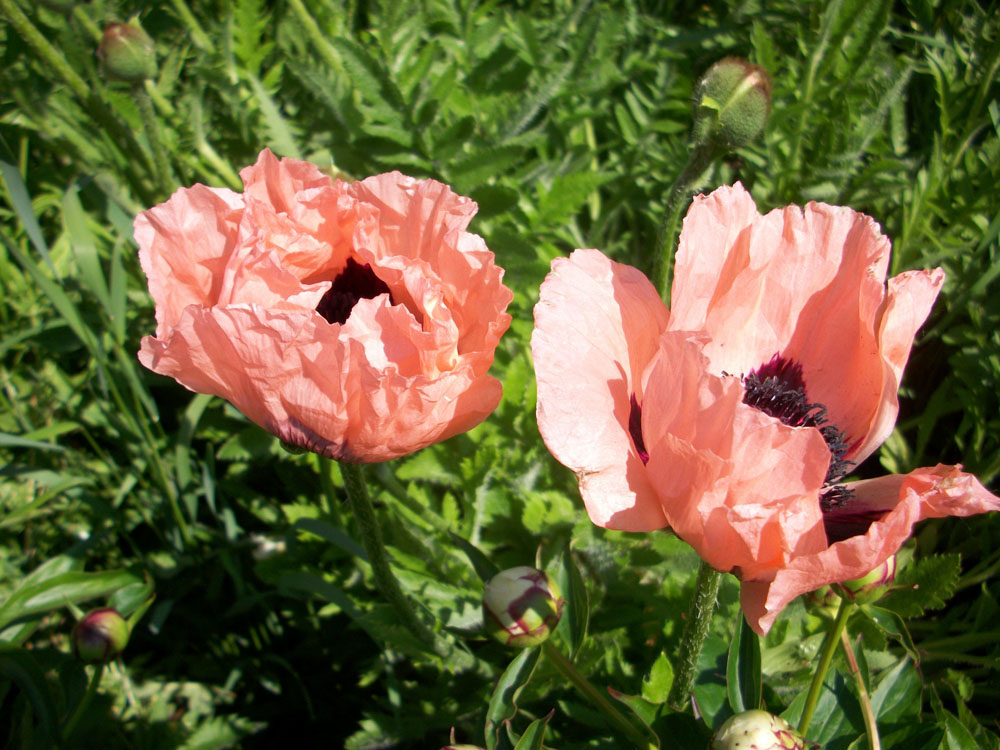Tall Garden Phlox

If you love cottage gardens and old-fashioned flowers, tall garden phlox (Phlox paniculata hybrids) may be a great choice for your garden border. Tall garden phlox adds stunning color and charm to perennial gardens and can bloom for six weeks or even more. Some cultivars bloom early in the summer while others hold off their blooms until mid-way through the season. Tall garden phlox averages two to three feet in height, but some varieties can be even taller.
There is a wide range of colors available, including white, rose, pink, red, lavender, purple, and orange. There are beautiful bi-color varieties that have a contrasting “eye” in the center of each flower or a contrasting margin. Some tall garden phlox even have sweetly scented blooms. I have seen them attract butterflies and hummingbird moths.
To get the most out of tall garden phlox, it is important to give plants the conditions they prefer. Full sun is best, but the flowers will grow in light shade. University of Minnesota Extension says shade will decrease both the bloom quality while also increasing disease problems. Avoid planting near trees and shrubs that will compete for nutrients and moisture. Placing tall garden phlox near a fence or garden wall can also lead to disease because air circulation can be poor. The best soil will be well-drained but also retain adequate moisture.
Tall garden phlox is readily available at local garden centers and nurseries. You can plant potted nursery plants throughout the growing season into early autumn. UMN Extension says the crown of the plant should be about an inch and a half below the soil surface when planting. Tall garden phlox will benefit from incorporating organic material into the soil to help improve soil structure. In the fall, mulch phlox with four to six inches of straw or chopped leaves to help protect the plant from cold winter temperatures.
You can divide phlox every two to four years as long as they are growing well. The best time to divide is in the spring before new growth begins. Include three to five vigorous shoots with roots attached with each division. Position in the soil as you would with new plants, so the crown is an inch or so below the surface of the soil. Spacing about 18 inches apart ensures good air circulation.
Water plants well at the soil level to aid in disease prevention. Plants also benefit from pruning. When stems reach six inches tall, UMN Extension recommends eliminating all but five or six stems per plant. The growing tips of remaining stems should then be pinched back to help produce more robust, large clusters of flowers.
Tall garden phlox, especially when planted in less than ideal conditions, can be prone to powdery mildew and spider mites. Maintaining good air circulation is crucial, and look for disease-resistant cultivars which are readily available. Keep plants well spaced and in full sun. Powdery mildew appears as disfiguring powdery white spots on the foliage, which can move onto the flowers. Fungicides can be used if necessary at the very earliest sign of infection.
Spider mites insert their sucking mouthparts to remove liquids from phlox leaves. This causes pinprick yellow discoloration of the foliage, and leaves can eventually turn dry and brown. UMD Extension says spider mites tend to be worse during hot, dry summers. Vigorous plants that are well-watered and fertilized are better able to tolerate mite feeding. An insecticidal soap spray can help, especially if you catch a mite infestation in its early stages.






